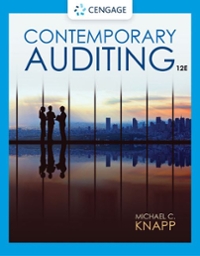In late 1993, Joseph Fierro accepted a part-time sales position with a Saks Fifth Avenue store in
Question:
In late 1993, Joseph Fierro accepted a part-time sales position with a Saks Fifth Avenue store in New York City.1 Fierro was assigned to the Men's Polo Department of that store, a department supervised by Robert Perley. Fierro's hard work and ingenuity produced sizable sales and impressed his superior. Within a few months, Perley hired Fierro as a full-time salesperson at an annual salary of $30,000. A few months later, Perley created a new position for Fierro, "Clothing Specialist," so that he could give his star employee a 20 percent raise. By early 1996, Fierro's annual salary had risen to $46,000 on the strength of strong performance appraisals consistently given to him by Perley.
In late August 1996, Joseph Fierro purchased a shirt from another department of the Saks store in which he worked. To obtain an employee discount for the shirt, a discount that he was not entitled to receive, Fierro forged two signatures on a document used to authorize employee sales discounts. The signatures he forged were those of Robert Perley and Donna Ruffman, a coworker. Fierro also entered the transaction in one of his department's electronic cash registers using Ruffman's employee identification number. The discount saved Fierro $9.85.
Approximately one week later, two auditors from Saks' Loss Prevention Department reviewed the August transactions entered in the electronic cash registers of the Men's Polo Department. The auditors noticed the employee sales transaction entered by Ruffman. After examining the documentation for the transaction, they suspected that someone had forged the authorization signatures for the related discount. The auditors questioned several employees in the department regarding the suspicious sale, including Joseph Fierro. Fierro initially denied that he had entered the transaction in his department's cash register. When the auditors suggested that they could easily determine who initiated the transaction, Fierro recanted. He admitted originating the transaction and forging the signatures of both Perley and Ruffman. In a written statement, Fierro later apologized for the incident. "I realize it was wrong to do this.
I exercised poor judgment, and I am truthfully sorry for what I did. I realize that something like this is wrong, and it will never happen again." After being questioned by the Loss Prevention auditors, Fierro returned to his department and discussed the matter with Perley. Perley told Fierro that he had no influence on the Loss Prevention Department's decisions but pledged to help him in any way he could. Perley later testified that he telephoned both the Loss Prevention Department and the Human Resources Department and appealed to them not to terminate Fierro.
On September 13, 1996, two representatives of Saks' Human Resources Department notified Fierro that he was being dismissed for violating company policy. They referred Fierro to Saks' employee handbook that listed specific examples of prohibited conduct that would lead to the "immediate dismissal" of an employee. Saks charged Fierro with engaging in three such acts, including theft of company merchandise, forging a signature, and receiving an unauthorized benefit by entering a transaction in a cash register under another employee's identification number.
Saks' Human Resources Department conducted an exit interview with Fierro on the date he was terminated. During this interview, Fierro again apologized for the poor judgment he had exercised. He also expressed disbelief that an "exceptional employee" could be fired for such a "trivial transgression."
Questions
1. In your opinion, was Saks’ zero-tolerance policy for employee theft reasonable? Was the policy likely cost-effective? Defend your answers.
2. Did Saks’ anti-harassment policy and the related complaint procedure qualify as internal controls? Explain.
3. Identify five control activities that you would commonly find in a men’s clothing department of a major department store. Identify the control objective associated with each of these activities.
4. Should a company’s independent auditors be concerned with whether or not a client provides a non-hostile work environment for its employees? If your answer is “yes,” identify the specific audit issues that would be relevant in this context.
Step by Step Answer:






